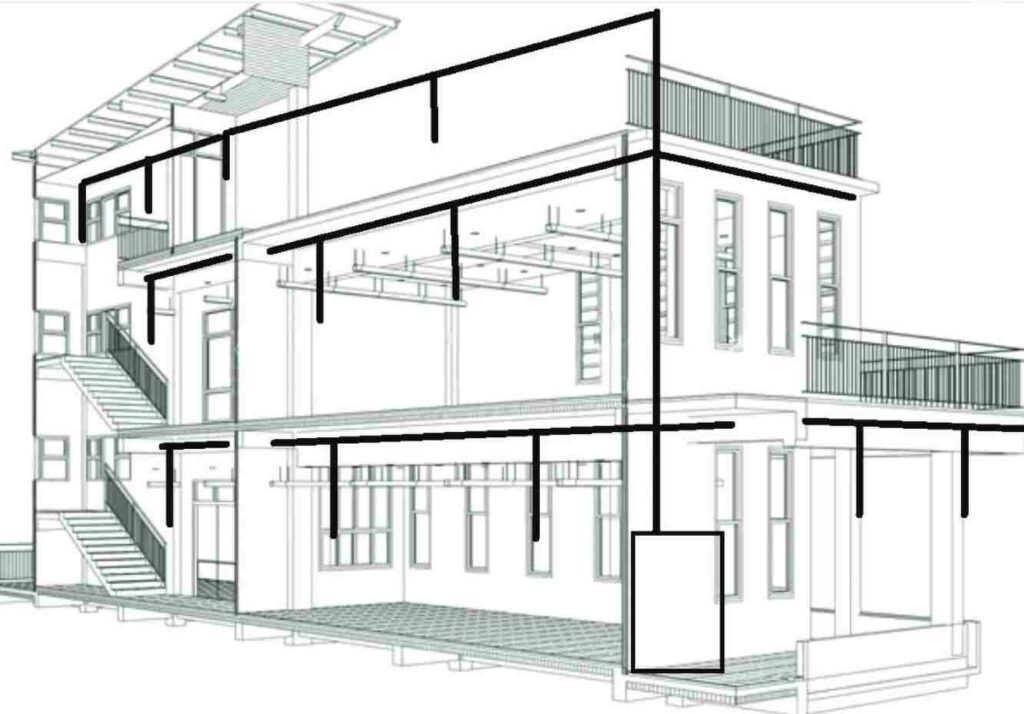
The CVS stands out as a solution that not only addresses dust removal effectively but also contributes to improving overall air quality within core industries
Raja Mukherjee
In industrial environments where dust, dirt and residues are unavoidable, maintaining cleanliness is not only a matter of appearance but a critical safety and operational concern. Raja Mukherjee, DGM – Service, Marketing & Support, Comac, shares the advantages of centralized vacuum system (CVS) in today’s industrial space.
A Central Vacuum System (CVS) presents a comprehensive and efficient solution to these challenges. Designed for use across large areas, the system operates through a strategically laid network of pipes that can be mounted anywhere within the facility, enabling the removal of dust and solids without the need to carry portable vacuum machines or deploy multiple cleaning units across different zones.
At the heart of the CVS lies a custom-designed network of tubing, fittings and elbows connected to a centralised baghouse filter and vacuum unit. This powerful suction mechanism, which can operate through a high static fan, turbine or vacuum air power unit, draws dust and debris through hoses fitted with nozzles, efficiently cleaning floors, walls, ducts and hard-to-reach spaces around machinery and other equipment. In addition to regular cleaning, the system proves highly useful in managing bulk material spills and equipment cleanouts, offering a rapid response to unforeseen incidents.
Safety
Cleaning in and around hazardous zones and complex equipment becomes significantly safer with a central system. Conventional methods like blowing down dust with compressed air often fail to remove dust, merely displacing it into the air where it becomes a fire and explosion hazard, particularly when dealing with combustible dust. With increasingly stringent OSHA dust level standards—reducing acceptable limits from one-eighth of an inch to as little as one-thirty-second—ensuring thorough dust removal is not just advisable but mandatory.
Housekeeping
Good housekeeping practices form another strong argument for centralised cleaning. Dust is constantly in motion, carried by air currents generated during normal operations or caused by unexpected events such as power failures, mechanical choke-ups or material spills. A central vacuum system addresses these conditions efficiently, preventing the accumulation of dust in corners and crevices that often go unattended.
Convenience
Operators find it easy to use, with pick-up points located at key areas across the facility. Its simplicity and accessibility encourage regular use, making routine cleaning a part of the daily workflow rather than a periodic task. This not only keeps the environment cleaner but also fosters a sense of care and attention within the workforce.
Employee Relations
A clean and well-maintained workspace contributes to improved morale and a healthier atmosphere. It sends a clear message that the organisation values the well-being of its workers and is committed to providing them with the best possible working conditions.
Efficiency
A CVS far outperforms traditional cleaning methods such as sweeping with brooms or using dustpans. The system excels in reaching areas that are otherwise inaccessible and eliminates the need for collecting and relocating waste manually. All material is channelled to a central collection point, where it can even be repurposed as feedstock, depending on the industry.

Pest Control
Infestation of insects is often overlooked. Insects thrive in dusty environments, especially in tight corners and under undisturbed equipment. By removing not just dust but also residual organic matter, a CVS helps reduce pest infestation and complements other pest control measures like fumigation, which are often costly.
Before installing such a system, it is advisable to engage with operators and maintenance teams to identify the cleaning challenges currently faced. Quantifying the time, effort and cost spent on traditional cleaning methods helps to justify the investment in a central system. If the need is to provide a convenient, easy-to-use solution that addresses dust and material spills before they spread, then a centralised vacuum solution is a prudent and future-ready choice.
The objective of installing a CVS may vary — from managing incidental spills and cleaning equipment to reducing the risks of cross-contamination and improving indoor air quality. In some setups, the system is scaled to support six to 10 operators simultaneously and integrated with a control mechanism that optimises power usage based on the number of active users. While such configurations may involve higher capital investment, they deliver unmatched cleaning efficiency in high-demand environments.
The system brings several operational advantages. It reduces cleaning time, lowers energy consumption, minimises manpower requirements and offers a cost-effective alternative to multiple portable machines. Applications span from regular cleaning operations to raw material handling, where the system can eliminate spillage issues associated with manual or conveyor-based methods.
The technology is also being extended to challenging sectors such as healthcare. A version of the CVS is now being developed as a Medical Bio Waste Handling System. Designed in compliance with the Bio-medical Waste Management Rules, 2016 by the Government of India, this adaptation ensures safe and hygienic handling of medical waste within hospital premises.
For residential and domestic settings, custom-designed CVS installations are being explored for use in societies and multi-storey apartment complexes, where they can serve the dual function of cleaning and waste collection.
As research data indicates, one of the most critical challenges in cleaning processes is controlling airborne pollution. The CVS stands out as a solution that not only addresses dust removal effectively but also contributes to improving overall air quality within core industries. Backed by a dedicated research team, efforts continue to develop even more advanced solutions that will redefine industrial cleaning and safety standards in the years to come.
 CIJConnect Bot-enabled WhatsApp
CIJConnect Bot-enabled WhatsApp









